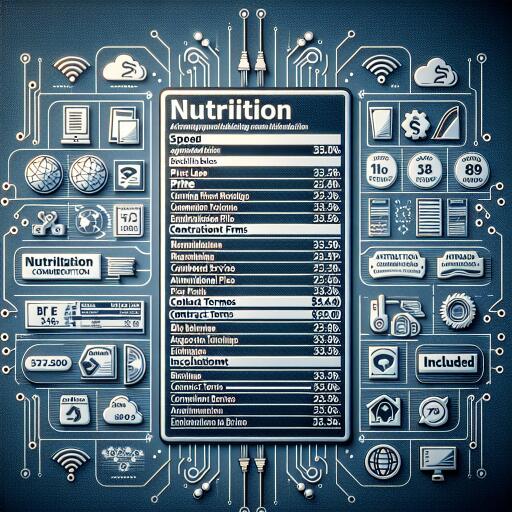The FCC Now Requires ‘Nutrition Labels’ on Broadband Deals
In an innovative move aimed at enhancing transparency in the broadband industry, the Federal Communications Commission (FCC) has mandated a new requirement for internet service providers (ISPs). Drawing inspiration from the familiar nutrition labels on food items, ISPs will now need to present “broadband labels” for their services. This new initiative, effective as of April 10, introduces a straightforward way for consumers to assess internet packages, akin to comparing nutritional values when grocery shopping.
These broadband labels are designed to resemble the nutritional facts labels consumers have grown accustomed to, offering a clear and concise overview of what an internet package entails. The initiative covers both home and mobile broadband plans, aiming to demystify the often complex details of internet services. While major ISPs will adopt these changes immediately, smaller providers with less than 100,000 subscribers have been granted an extension until October 10, 2024, to comply.
Key information displayed on these labels includes service pricing, promotional rates, data allowances, and internet speeds. Furthermore, they will offer insights into the ISPs’ privacy policies and network management practices. The transparency doesn’t end online; shoppers will encounter these labels in both digital and physical retail spaces, ensuring all potential customers benefit from the increased transparency.
Recognizing the potential for technical jargon to overwhelm consumers, the FCC has also prepared a comprehensive glossary. This resource aims to bridge the gap in understanding, explaining terms such as “pass-through” fees – additional charges ISPs may transfer to customers – and “typical latency,” which measures the delay in data transmission across the network.
To give consumers a clearer idea of what to expect, the FCC has provided a sample broadband label on their website. This sample dramatically illustrates the difference in visibility of costs and terms. It prominently features the monthly rate, clearly highlighting any introductory offers and the standard rate post-promotion. This initiative seeks to eliminate surprises about rate increases and ensure consumers are fully informed about the terms of their internet service agreements.
The introduction of broadband labels represents a significant step towards consumer empowerment in the digital age. By demystifying the details of internet service offerings, the FCC hopes to foster a more informed consumer base. This move, while not directly tackling the issue of limited ISP choice in many regions, aims to prevent scenarios where consumers unwittingly spend more than necessary for their internet services. The overarching goal is to promote a marketplace where informed decisions lead to better service experiences and potentially more competitive pricing for consumers.
In conclusion, the FCC’s introduction of broadband labels marks a commendable effort to increase transparency and consumer understanding in the broadband market. As consumers become more knowledgeable about their internet service options, it’s expected that this will lead to a more competitive and consumer-friendly industry landscape.









